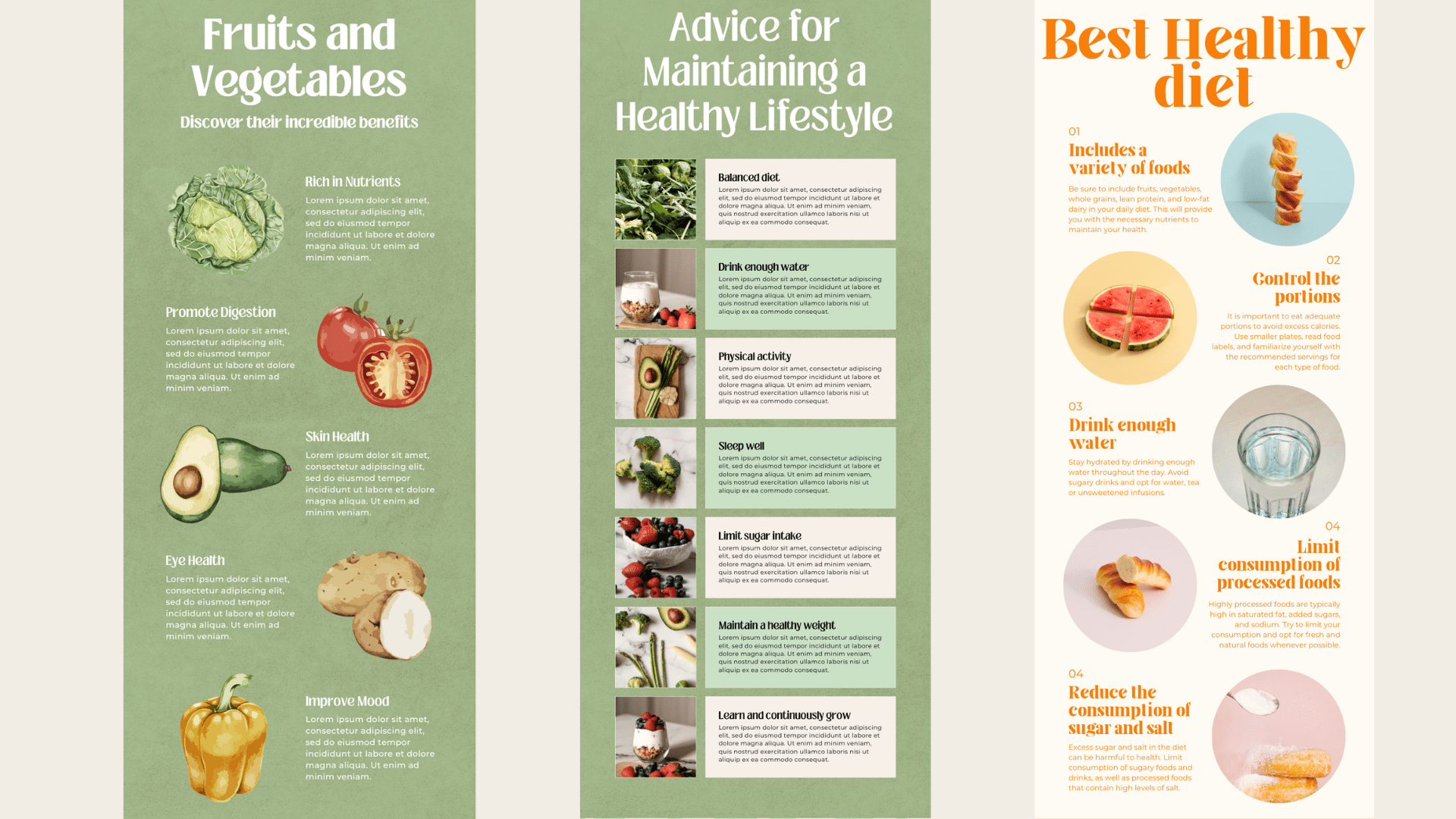Healthy Food Chart: A Comprehensive Guide
What is a Healthy Food Chart?
A healthy food chart is a visual representation of the various food groups and recommended daily servings for each group. It serves as a guide to help individuals make informed choices about the types and quantities of foods they should consume to maintain a balanced and nutritious diet.
Why is a Healthy Food Chart Important?
Provides Nutritional Balance
A well-designed healthy food chart ensures that you consume a variety of nutrients essential for overall health. Each food group provides specific nutrients, and by following the recommended servings, you can meet your body’s nutritional requirements without deficiencies or excesses.
Aids in Meal Planning
Meal planning can be a daunting task, but a healthy food chart simplifies the process. By referring to the chart, you can easily plan well-balanced meals that include all the necessary food groups in the correct proportions.
Promotes Healthy Eating Habits
Incorporating a healthy food chart into your lifestyle can help establish and reinforce positive eating habits. It encourages mindful food choices and discourages overconsumption of certain food groups, leading to a more balanced and sustainable approach to eating.
Understanding the Food Groups
Fruits and Vegetables
Fruits and vegetables are nutrient-dense powerhouses that provide essential vitamins, minerals, fiber, and antioxidants. They are low in calories and high in water content, making them an excellent choice for maintaining a healthy weight and promoting overall well-being.

Grains
Whole grains, such as brown rice, whole wheat bread, and oats, are rich sources of complex carbohydrates, fiber, and various vitamins and minerals. Refined grains, on the other hand, should be consumed in moderation as they lack many of the nutritional benefits of their whole-grain counterparts.
Protein Sources
The macromolecular compound known as protein assumes an indispensable role in the processes of constructing and restoring bodily tissues, as well as synthesizing catalytic enzymes and hormonal substances. Lean varieties of muscular flesh, avian-derived comestibles, aquatic vertebrates, oviparous encasements, leguminous vegetables, and arboreal seeds constitute excellent repositories of this vital nutrient. To guarantee the procurement of all essential amino acid constituents, it is of paramount importance to incorporate a diverse array of proteinaceous sources within one’s dietary regimen.
Dairy Products
Dairy products, such as milk, yogurt, and cheese, are excellent sources of calcium, protein, and various vitamins and minerals. However, it’s essential to choose low-fat or non-fat options to limit your intake of saturated fat and cholesterol.
Healthy Fats
While it’s important to limit your intake of saturated and trans fats, healthy fats, such as those found in avocados, nuts, seeds, and fatty fish, are essential for proper bodily functions. Their function encompasses the provision of vital energy, the facilitation of cellular proliferation, and the safeguarding of bodily organs from potential detriments.
Creating Your Personalized Healthy Food Chart
Determine Your Calorie Needs
The first step in creating your personalized healthy food chart is to determine your daily calorie needs. The determination of this aspect shall be contingent upon a multitude of variables, encompassing one’s chronological age, biological gender, vertical stature, corporeal mass, and the degree of physical exertion habitually undertaken. Online calculators or a consultation with a registered dietitian can help you determine your specific calorie requirements.
Calculate Nutrient Requirements
In addition to calories, it’s important to consider your nutrient needs. The recommended daily allowances (RDAs) for various nutrients, such as protein, carbohydrates, fats, vitamins, and minerals, can vary based on your age, gender, and overall health status.
Incorporate Variety
While creating your healthy food chart, it’s crucial to incorporate a variety of foods from each food group. This not only ensures that you’re getting a wide range of nutrients but also adds diversity and excitement to your meals.
Plan Your Meals
Once you have your personalized healthy food chart, use it as a guide to plan your meals. Consider your schedule, preferences, and any dietary restrictions or allergies. Meal planning can help you stay on track and avoid making unhealthy choices due to lack of preparation.

Tips for Following a Healthy Food Chart
Start Slowly
Transitioning to a healthier eating pattern can be challenging, especially if you’re accustomed to a different way of eating. Start by making small changes and gradually incorporate more elements from your healthy food chart. This course of action will render the undertaking more amenable to effective management, thereby augmenting the probability of attaining a favorable outcome.
Involve Family and Friends
Involving your family and friends in your journey can provide invaluable support and motivation. Share your healthy food chart with them, and encourage them to join you in making healthier choices. This can create a positive and supportive environment, making it easier to stick to your goals.
Make it Enjoyable
The pursuit of a salubrious dietary regimen need not be a tedious or constrictive endeavor. Engage in exploratory culinary ventures by experimenting with novel recipes, gustatory sensations, and cooking methodologies to imbue your gastronomic experiences with enhanced delight. Don’t deprive yourself of your favorite foods; instead, find healthier alternatives or enjoy them in moderation.
Stay Consistent
Consistency is key when following a healthy food chart. While it’s perfectly normal to have occasional indulgences, it’s important to get back on track quickly. Consistency will help you establish lasting habits and achieve long-term success.
Benefits of Following a Healthy Food Chart
Improved Overall Health
By following a healthy food chart, you’ll be providing your body with the nutrients it needs to function optimally. This can lead to improved physical and mental health, reduced risk of chronic diseases, and an overall enhanced quality of life.
Weight Management
A healthy food chart can be an effective tool for weight management. By consuming a balanced diet with appropriate portion sizes, you can maintain a healthy weight or achieve your desired weight goals in a sustainable manner.
Disease Prevention
Many chronic diseases, such as heart disease, diabetes, and certain cancers, are linked to poor dietary habits. Following a healthy food chart can help reduce your risk of developing these conditions by providing your body with the necessary nutrients and promoting a balanced lifestyle.
Increased Energy Levels
When you fuel your body with nutritious foods, you’ll likely experience increased energy levels and improved stamina. This can enhance your productivity, physical performance, and overall well-being.
Conclusion
Achieving a balanced and nutritious lifestyle is made easier by embracing a personalized healthy food chart that aligns with your unique needs and preferences. This comprehensive guide promotes sustainable eating habits and long-term well-being through consistency, variety, and moderation. Seek professional guidance if needed, and celebrate small victories on your transformative path toward optimal health and vitality.
Frequently Asked Questions
How often should I update my healthy food chart?
It's generally recommended to review and update your healthy food chart every few months or if there are significant changes in your lifestyle, such as a change in activity level or a new health condition.
Can I still enjoy my favorite foods while following a healthy food chart?
Absolutely! A healthy food chart promotes balance and moderation, not deprivation. You can still enjoy your favorite foods occasionally, as long as you account for them in your overall dietary plan.
How do I know if my healthy food chart is meeting my nutritional needs?
Monitoring your overall well-being, energy levels, and any specific health markers (such as blood pressure, cholesterol levels, or blood sugar levels) can provide insights into whether your healthy food chart is meeting your nutritional needs. If you have concerns, consult with a healthcare professional or registered dietitian for personalized guidance.
Can a healthy food chart help with specific dietary needs or restrictions?
Yes, a healthy food chart can be tailored to accommodate specific dietary needs or restrictions, such as vegetarian, vegan, gluten-free, or food allergies. Work with a professional to ensure your chart meets your unique requirements while still providing a balanced and nutritious diet.
How can I make following a healthy food chart more convenient when eating out or on the go?
Planning ahead and making smart choices when dining out or on the go can help you stick to your healthy food chart. Look for restaurants that offer nutritional information, choose grilled or baked options, and opt for side salads or veggies instead of fried or high-calorie sides. Packing your own snacks and meals can also ensure you have healthy options readily available.




